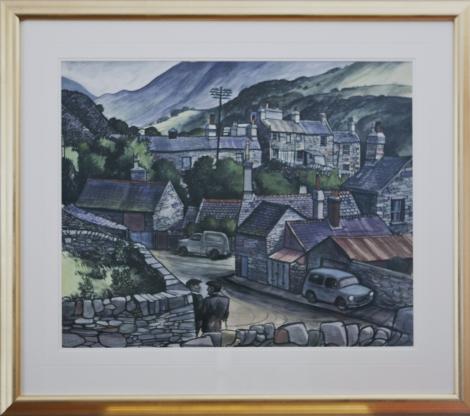Bethesda

Bethesda
Watercolour - Signed 1973
Image: 20ons x 24ins - Framed: 29ins x 33ins
Suggested Offer: £4,400
The town grew around the slate and stone quarrying industry, the largest of the local quarries being the Penrhyn Quarry. At its peak, it was exporting its purple slate all over the world, and in so doing it gained a reputation for being the world's best. The town was the site of a famous three-year strike led by the North Wales Quarrymen's Union from 1900. This led to the creation of the nearby village of Tregarth, built by the quarry owners, which housed the families of the workers who did not strike.
The architecture and layout of the town is largely utilitarian. Most of the buildings are constructed of stone with slate roofs. Some are constructed wholly of slate blocks although such buildings tend to suffer from damp and structural slippage because the very flat and smooth surfaces of slate do not bind well to mortar.
The upper parts of Carneddi, Cilfodan and Tan y Foel owe more to stone quarrying on the nearby hills rather than slate quarrying that supported the lower end of the town. At the eastern limits, the town is bounded by the rising land of the Carneddau mountains that form some of the more remote landscapes of Snowdonia. Much of Bethesda was once discrete villages such as Gerlan, Rachub and Braichmelyn and their names are retained as districts of the town
